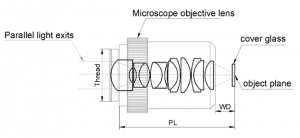A Comprehensive Guide to Ruggedized Imaging Lenses
Ruggedized imaging lenses are vital components in environments where traditional lenses fall short due to exposure to dust, moisture, extreme temperatures, and mechanical stresses. These lenses are engineered to perform reliably in harsh conditions, making them indispensable in various fields such as industrial automation, surveillance, military, and machine vision applications.
Understanding Ruggedized Imaging Lenses
Ruggedized imaging lenses are constructed with durability and resilience in mind. They are designed to withstand tough environments that can compromise standard lenses. Such conditions include high levels of vibration, shock, dust, humidity, and temperature fluctuations. As a result, ruggedized lenses are crucial for applications requiring consistent and reliable imaging performance, even in the most challenging circumstances.
Essential Factors for Designing Ruggedized Lenses
When developing ruggedized imaging lenses, several key factors must be considered to ensure optimal performance and longevity:
- Environmental Durability:
-
-
- IP Rating: A high IP (Ingress Protection) rating is essential to guard against dust and water ingress, ensuring the lens remains operational in adverse conditions.
- Temperature Tolerance: The lens should be capable of functioning across a broad temperature range to accommodate varying environmental conditions.
- Resistance to Vibration and Shock: Lenses should be robust enough to withstand vibrations and shocks without compromising their structural integrity or image quality.
-
-
- Focal Length: Accurate focal length specification is critical for achieving the desired field of view and magnification.
- Aperture: Using fixed apertures can enhance robustness and minimize complexity, providing consistent image quality.
- Coatings: Applying anti-reflective, scratch-resistant, and hydrophobic coatings improves optical clarity and protects the lens from environmental damage.
- Resolution: The lens must meet specific resolution requirements to ensure clear and sharp imaging.
-
-
- Material Selection: Metal housings are preferred for their durability. Aluminum is lightweight and cost-effective, while copper offers non-magnetic properties for specific applications.
- Lens Mount Compatibility: The lens should be compatible with various mechanical interfaces to ensure secure and stable attachment.
- Design and Budget Considerations:
-
- Cost Efficiency: Balancing performance with cost is crucial to deliver high-quality lenses within budget constraints.
- Mechanical Constraints: Physical dimensions, total mass, and flange focal distance are vital factors in lens design, ensuring compatibility with existing systems and ease of integration.
Advantages of Using Ruggedized Imaging Lenses
Ruggedized imaging lenses offer numerous benefits that make them superior to standard lenses in demanding applications:
- Enhanced Reliability: With fewer moving parts, these lenses are less prone to mechanical failure, ensuring consistent operation over time.
- Superior Durability: They are built to withstand extreme environmental conditions, making them suitable for a wide range of challenging applications.
- Stable Imaging Performance: Fixed apertures maintain consistent image quality, which is crucial for automated systems and long-term monitoring applications.
Types of Imaging Lenses
- Fixed Magnification Lenses:
-
-
- Telecentric Lenses: These lenses are ideal for precise measurement tasks. They maintain constant magnification and minimize perspective errors, making them suitable for high-precision imaging applications.
- Microscope Objectives: Used for high-magnification imaging, microscope objectives are optimized for short working distances and are ideal for detailed imaging of small objects.
- Variable Magnification Lenses:
-
- Fixed Focal Length Lenses: Known for their optical purity, these lenses provide sharp images with minimal distortion. They are suited for applications where a specific field of view is required.
- Zoom Lenses: Offering the flexibility to adjust focal length, zoom lenses are ideal for applications needing variable field of view. They provide versatility in imaging but may not always deliver the highest resolution.

Diagram of Microscope Objective Lens
Shanghai Optics offers a diverse selection of ruggedized imaging lenses designed to meet the demands of various challenging environments. These lenses feature robust construction, fixed apertures, and specialized coatings, ensuring they perform reliably under adverse conditions. Our ruggedized lenses are cost-effective and suitable for industrial, security, and other critical applications.
Ruggedized imaging lenses are critical components for industries that require reliable imaging solutions in harsh environments. With features that include high durability, consistent performance, and environmental resilience, these lenses are essential for applications ranging from industrial automation to military operations. Shanghai Optics’ range of ruggedized lenses provides a dependable and budget-friendly solution for these demanding imaging needs, ensuring optimal performance and reliability. By focusing on key factors such as environmental durability, optical performance, and design constraints, we ensures that its ruggedized lenses stand up to the toughest challenges, making them the go-to choice for critical imaging applications.
Contact Shanghai Optics today! We’d be more than happy to discuss your projects and how to best bring them to fruition.
